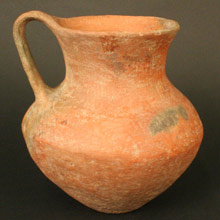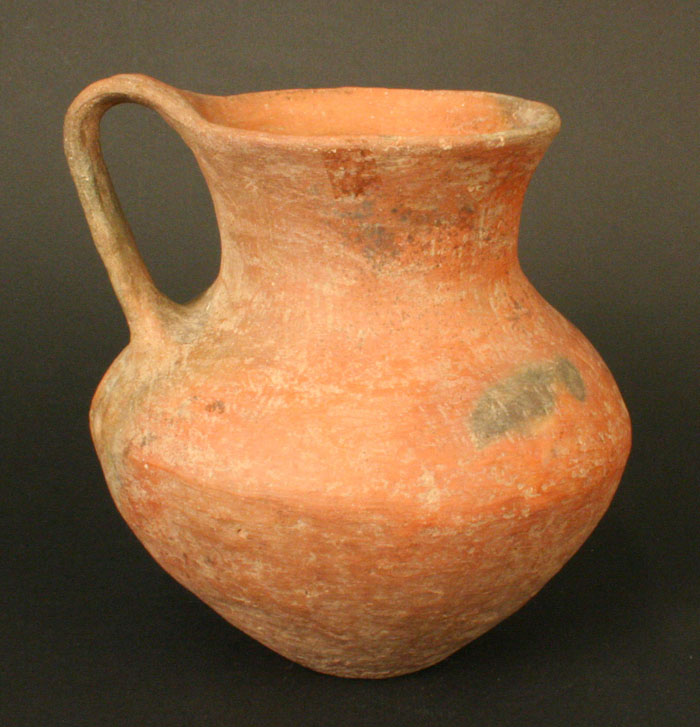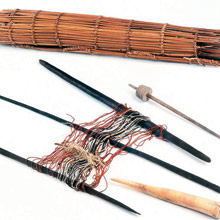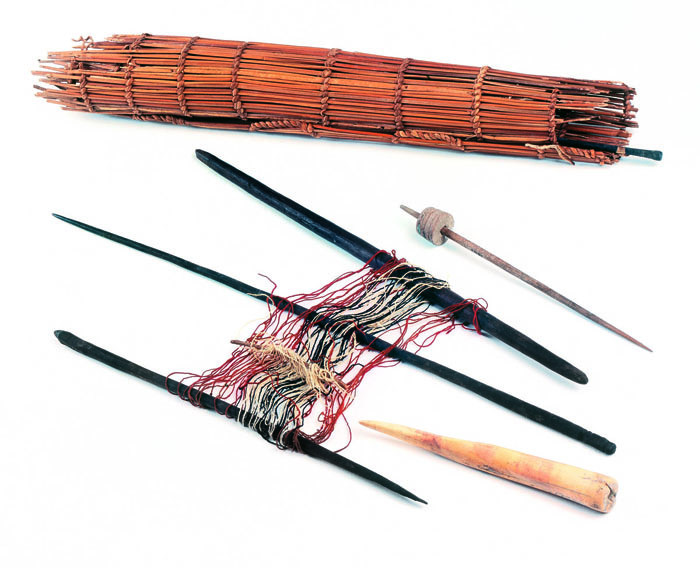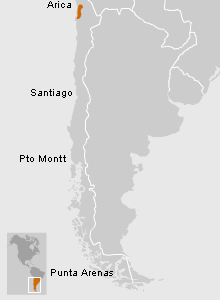The three distinct environments in which the groups of the Arica culture settled—mountain, valley and coast—allowed them access to complementary resources from different ecological strata. Surplus goods were moved by llama caravan, a form of transportation suited to this mountainous region. During this period, the people expanded the area available for growing by building farming terraces and platforms, along with irrigation canals. A large quantity of tools for working the land, including wood-handled stone shovels, point to the importance of farming among these groups. On the coast, the Arica people invented the “three-beamed raft,” which allowed deep water fishing of species such as eel and houndshark. Miniatures of these craft were laid with these fishermen in their graves. The guano that accumulated at sea bird nesting sites on the coast was taken inland to be used as fertilizer for farming. The Arica people also crafted copper into brooches, hooks and other instruments, and used gold and silver to make other ornaments.
How to Arrive
El Museo se encuentra ubicado en pleno centro de Santiago, en la esquina de las calles Bandera y Compañía, a una cuadra de la Plaza de Armas.
Tickets
Chileans and resident foreigners: $1,000 Foreigners: $8,000 Chilean students and resident foreigners: $500 Foreign students: $4,000
Guided Visit
El Museo cuenta con un servicio de guías, sin costo adicional, para los establecimientos educacionales.
Information for Teachers
Invitamos especialmente a coordinarse con alguno de nuestros guías para programar una visita o actividades de motivación y seguimiento que aprovechen de la mejor forma la experiencia de visitarnos.
Audioguides
Download recordings of the Permanent Exhibition display texts in English, French, Portuguese and Spanish here. These audioguides are in mp3 format and are arranged by cultural area, following the same order as our exhibit galleries. Descargue desde esta página audioguías en castellano, inglés, francés y portugués con los textos de las vitrinas de la […]





































